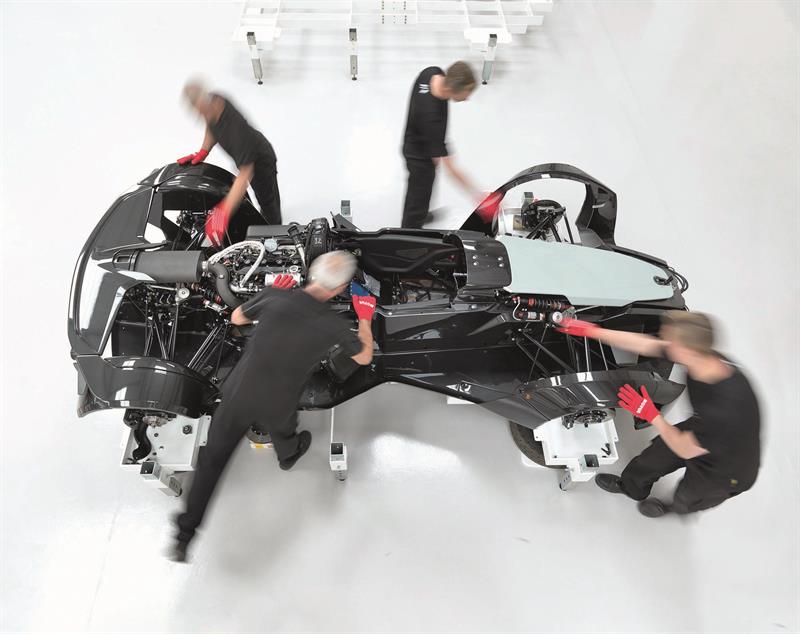Motorsport is more than just blazing heat, screeching brakes, a roar of engines, and the test of a driver’s skill and bravery. It is positioned as the pinnacle of technological innovation coming out of the automotive industry. But for a sport that uniquely has ‘Constructor Championships’ to reward the work of the team behind the athlete, it is interesting that the value of new technologies hasn’t been realised fully yet. Indeed, when it all boils down, an athlete may be the most talented individual, but it is technology that is the real driver behind the sport’s success.
Taking inspiration from the broader automotive manufacturing industry, here are some of the technologies we think have the biggest potential for motorsport manufacturers to revolutionise how their future vehicles will be designed and produced.
Two emerging technologies that are helping to catapult motorsport further into pole position are artificial intelligence (AI) and machine learning (ML). However, they are still very much in the early stages of adoption, with some in motorsport using these technologies to analyse the masses of data collected so that people and processes are better connected, meaning teams can adapt to scenarios almost instinctively. The data allows them to make more accurate, proactive decisions that enhances the performance of the vehicle and delights fans. The focus is largely on the driver, supporting them by using data insights for things like scheduling pit-stops and choosing the exact moment to brake and speed up when navigating corners. With the sheer quantity of data available, motorsport teams have the opportunity to use it in their design and manufacturing processes too, improving performance, handling and the customisation of vehicles, so drivers can feel and respond to the road in unprecedented ways.
Many automotive manufacturers are taking steps toward a more advanced manufacturing environment, one that is characterised by connectivity, driven by data, and open to new collaborative modes of working, something that the motorsport industry needs to catch up on.
What motorsport manufacturers should envision is a converged design and manufacture environment. Product designers should use technology not to document a pre-determined outcome but rather to define the range of possible ideas and narrow them down according to functional parameters.
AI will augment this analysis, learning from each iteration to eventually eliminate the need for engineers to repeat common tasks. As designs move into production, the manufacturing systems themselves will provide suggestions about the impact of specific process adjustments or insight into where failures might occur. Data gleaned from production will be used to enhance simulations of components and systems further upstream in the pipeline, compressing the development cycle.
Generative design tools are being used by automotive engineers to surpass the usual modes and limitations of traditional design thinking. By synthesising forms based on inputs about performance, material or manufacturing characteristics — as opposed to a preconceived idea of how a part should look and behave — generative design can deliver more design options than any team could come up with on its own.
 Instead of creating an automotive component based on the previous version of a similar one, engineers tell the generative design tool how strong the part should be, how much it should weigh, how much force it must withstand, and what material it should consist of. Generative design uses AI to rapidly create numerous variants, ‘learning’ from each iteration.
Instead of creating an automotive component based on the previous version of a similar one, engineers tell the generative design tool how strong the part should be, how much it should weigh, how much force it must withstand, and what material it should consist of. Generative design uses AI to rapidly create numerous variants, ‘learning’ from each iteration.
The potential for these technologies in automotive manufacturing is already being tested, which can act as a major learning curve for motorsport manufacturers. General Motors (GM) is using generative design to promote lightweighting and simplify supply chains to reduce the cost of making electric and autonomous vehicles. In a recent collaboration with Autodesk, GM engineers designed a new, functionally optimised seat bracket. This standard auto part, which secures seat-belt fasteners to seats and seats to floors, typically features a boxy design made up of eight separate pieces. Using generative design software, GM came up with more than 150 alternatives. The one the team chose is made from a single piece of stainless steel and is 40% lighter and 20% stronger than its predecessor. Applying this concept to the motorsport industry across hundreds or thousands of parts can go a long way toward making vehicles less expensive, lighter and more fuel-efficient.
While 3D printed F1 cars may sound farfetched, emerging technologies and environmental requirements may make them a reality. Depending on the vehicle, 3D printing can be used to produce lightweight components, personalised components for mass customisation and on-demand prototypes for generatively designed parts.
Another consideration for investing in new tech is the environmental impact of the sport. Vehicle lightweighting, which can be achieved using additive manufacturing techniques, gives vehicle manufacturers a proven way to improve fuel economy by replacing components with a variety of lightweight materials, including aluminium, magnesium, high-strength steel, plastics, and carbon fibre. Reducing the weight of a vehicle even by 10% typically delivers a 6 to 7% increase in overall fuel economy.
Advanced manufacturing and the adoption of new technologies including AI, ML, generative design and 3D printing within motorsport does not have one set path. Implementations will vary between sports, whether that’s F1 or MotoGP, as each organisation chooses investments that will provide the greatest competitive advantage to them. What is clear, however, is that the sport is changing, and it’s time to take these technologies for a test drive.





